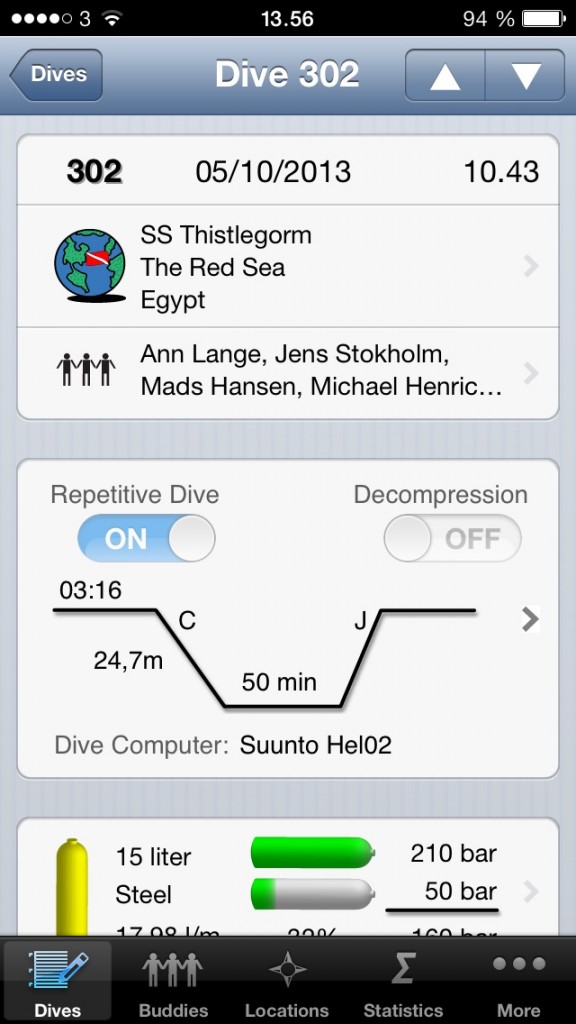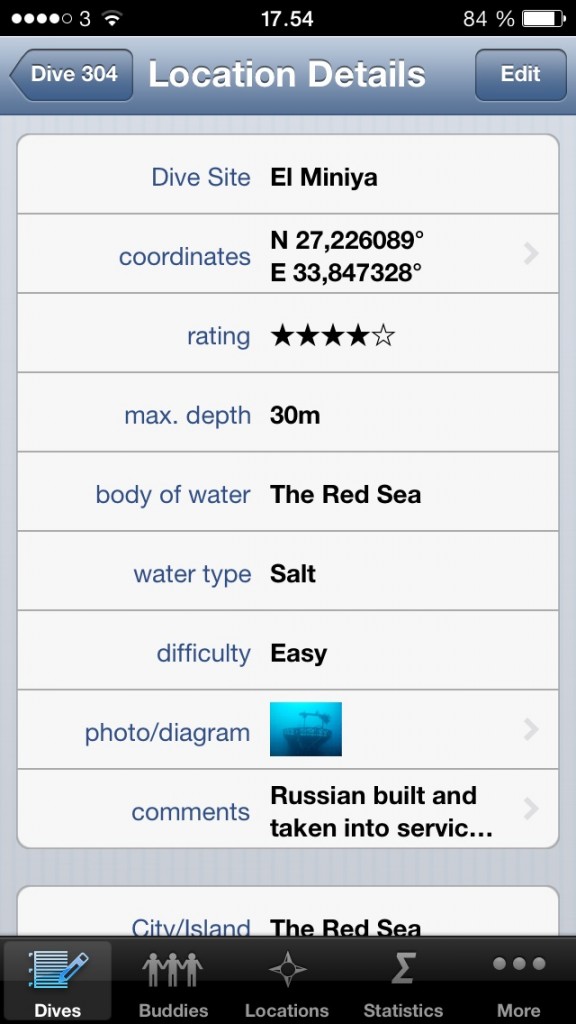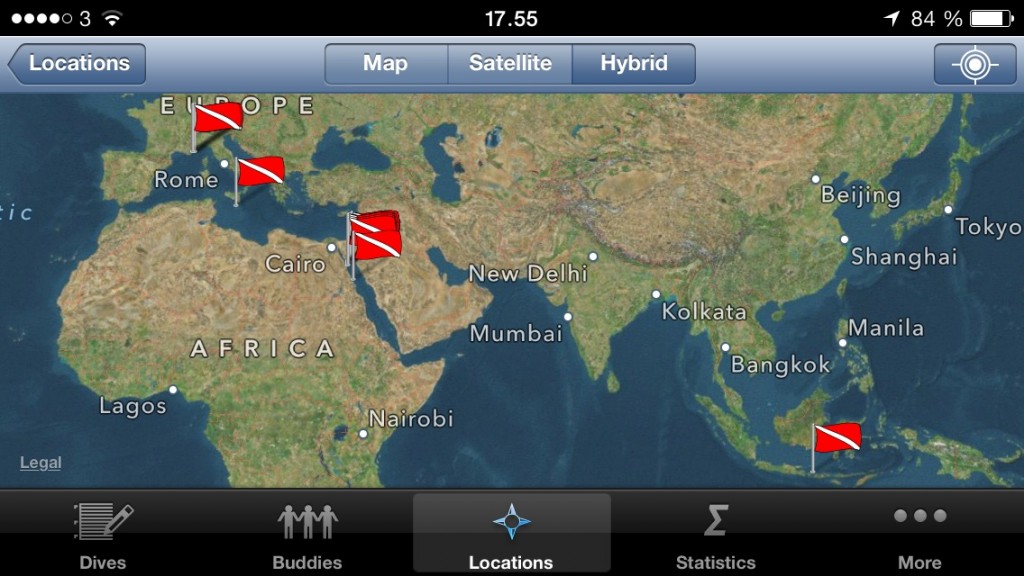Possibly the most comprehensive dive log for iOS, but it comes with a price tag

I’ve already reviewed the free London Dive Chamber app, which offers a series of useful tools for divers, with some limitations in usability and functionality. The dive log for iOS is another option.
First, the differences between the two: Dive Log is, as the name suggests, a dive log first and foremost. It will store your logged dives and your personal info, including certification details and emergency medical contact information, as well as a list of your equipment. Unlike the London Dive Chamber app, it does not have a database of hyperbaric chambers, checklists, dive-medicine facts or other related info. And where the London Dive Chamber app is free, Dive Log costs $11.99.
But as a digital dive log, it is hard to find one that’s more comprehensive. The logging interface allows you to number your dives beginning with any number. You can add locations manually or with GPS; you can add buddies from your iOS contact list; and you can add a full, visual dive profile with a lot of variables, such as double tanks or a rebreather system.
Adding dives is quick and easy, and you can use your previous dive as a template —good for dive vacations where dives tend to be very similar — or start from scratch. In addition to logging all dive-related info, you can also add photos taken during the dive, as well as adding any equipment from your inventory that you’ve used. You can even have a dive buddy sign your dive, using the unit’s touch screen.
Adding locations allows you to map all your dive spots on a virtual world map, and you can add ratings, comments and even photos to the location. The equipment page allows you to enter your equipment and make note of the last time you had each item serviced.
The only drawback to the logging is that there’s a fairly set protocol imposed by the app: First add locations, buddies and equipment. Then, log a new dive, adding the info you’ve entered into the other sections. It is possible to add the info as you log a dive, or even after, but it is cumbersome.
Divers using compatible computers — and this includes most of the popular brands —can import data directly from dive computers via laptop or desktop, and into the app, allowing for fast and seamless logging.
If you use multiple iOS units, such as an iPhone and an iPad, you can sync between them, using either Wi-Fi or iCloud. And with desktop computer dive-software, you can also perform one-way or two-way syncs between the iOS app and the software. This works with both PCs and Macs.
Bottom line: This is one of the strongest dive-log apps on the market, with features that most divers will appreciate. The main drawbacks are the price and the lack of an offline database of hyperbaric chambers, as well as the various checklists featured in the London Dive Chamber app. But a combination of the two makes your phone into a complete diver’s logging and emergency tool.



